Browse Exhibits (21 total)
19th Century School Books and Misprints
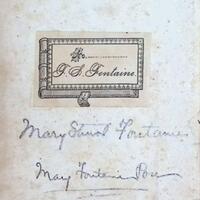
In 1836, Plantation Owner and Merchant John Fontaine was elected the very first mayor of Columbus, Ga [1], and he built a massive library with his family, children, and close friends. Columbus State University Archives is now the home of a few of the books from this library, and this exhibit focuses on one of these books, Peter Parley’s Tales about Ancient Rome, With Some Account of Modern Italy by Samuel G, Goodrich. By looking at this book as a material artifact, one can uncover the importance of how this book people used and the impact a possible misprint had through the life of this text. This exhibit aims to bring to light the different things that impacted both this copy of the book and other copies.
[1] “The John M. Fontaine House.”
A Time Capsule through text and how perceptions of a region change
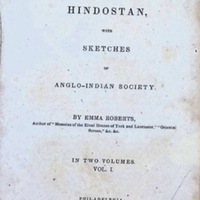
An exhibit of Scenes and Characteristics of Hindostan with Scenes and Characteristiscs of Anglo-Indian society Vol 1. This exhibit views and discusses the changes in spelling standardization, views of Indian and Hindu society during the 1830's, how these views have evolved since publication and the wear on this individual text. This copy was found in the Fontaine Family collection and was digitized by Logan Oliver and the History of the Book class.
An Identity Solidified: The Early Episcopal Church
The Frescoes of the Sistine Chapel painted by Michaelangelo and Hobart Press’s publication of A Pastor's Plea for Evangelical Catholic Truth both share the same fundamental purpose– they serve to create legitimacy for a religious state as contributions to the arts. Obviously Michaelangelo’s magnum opus is vastly different than the transcription of a sermon delivered in a small church in 19th Century Columbus, Georgia. However, both of these objects serve as an apparatus to the papal authority– The frescoes, to the macro, and the sermon, to the micro. Philanthropy as well as support for the arts was established as a key tenet in the Christian Church from the early days of Catholic Papal authority. It was Episcopal thinkers such as John Henry Hobart, of whom Hobart Press was named after, who were able to take the formula as used by the Catholic and Anglican Churches and successfully tweak it to suit the newly formed American Episcopal Church.
Pictured is the Trinity Episcopal Church Sanctuary.
At a Crossroads: MidTown, Inc. 2005-2015
MidTown, Inc., a community development organization in Columbus Georgia, celebrated its 10th anniversary in 2015. This exhibit is a digital summary of the student’s research includes a timeline of MidTown Inc., oral histories and transcripts conducted with people involved with its creation, and demographic maps of Midtown's age, race/ethnicity and education levels.
Bibb City: Collected Lives from a Mill Town
A rich variety of interpretive materials on Bibb City, a former company-owned mill village in west central Georgia. This exhibit includes an oral history play, text and images from the history exhibit, "in character" walking tour scripts, a printable self-guided community tour, and a downloadable audio tour.
Carson McCullers

The Mary Mercer and Margaret Sullivan collections are two of several collections documenting the inspiring life of Carson McCullers. Born in Columbus, Georgia on February 19, 1917, Lula Carson Smith, more commonly known as Carson McCullers, is an important figure in Columbus’ history. Her legacy continues on today through her works and the artifacts found in these collections.
Carver Heights History Harvest: Columbus' First Post WWII Segregated Suburb

The Carver Heights subdivision was the first post-World War II segregated neighborhood in Columbus, Ga, located just outside the boundaries of the city. Carver Heights become an engine in the production of the city's black middle class.
In fall 2018, students from CSU's Department of History and Geography welcomed residents and homeowners to the Carver Heights History Harvest held at the Mildred Terry Library. We collected oral histories and photographs from community members to create this digital humanities project. The project includes interviews, images, timelines, and maps to help share the story of the Carver Heights community.
During this course we were asked to prepare a short article on the history of the community for the Georgia State Historic Preservation Office's journal Reflections. It was published in November 2018 a few weeks before the end of our class.
With the continued support of community members we hope to prepare a nomination for the National Register of Historic Districts. Registration recognizes the central role this community played in the history of the city. Being on the National Register does not place any restrictions on home owners or their homes, it is designed to help recognize and celebrate the neighborhood and its impact on the city.
Digging in the Archives

Explore the CSU Archives and discover how to conduct research using primary sources.
Healing Words: Chaplaincy, Reading, and Religion in the Civil War
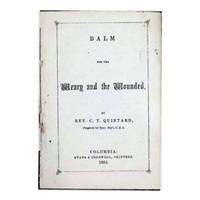
An exhibit of Balm for the Weary and Wounded by C.T. Quintard. This exhibit views the connections that the devotional and Quintard have with the American Civil War and what the book highlights with the evolution of reading during this time period. This copy of the devotional was found in the Fontaine Family Collection and digitized by Michael Bank for The History of the Book class.
Hopes and Fears; or, Scenes from the Life of a Spinster
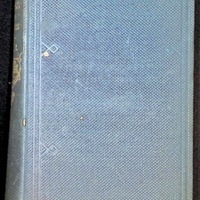
Charlottle Mary Yonge's Hopes and Hears; or Scenes from the Life of a Spinster is a victorian-era novel that explores the spiritual, moral and coming of age lives of women and people who live in the margins of society. Despite this two-volume story not being one of Yonge's well-known stories, this book's production qualities, thematic content, and owership markings — particaulry Mary Stewart who is connected to the Fontaine family — reflects the broader cultural and socialetal realities of Victorian women readers. Specifically, it demonstrates how unmarried women, or spinsters, used religious fiction as another way of moral instruction in personal identity and spiritual reflection at a time when women's roles were socially constrained.
In Transition: The Visionary Art Environment of Pasaquan

This exhibit captures the transition of the visionary art environment of Pasaquan as it shifts from the Pasaquan Preservation Society to the Kohler Foundation. It includes a collection of resources to inform and contextualize Pasaquan, the life of Eddie Owens Martin, and the preservation and conservation processes.
J. Kyle Spencer Map Collection

The Spencer Map Collection documents the emergence and evolution of the American colonies, specifically Georgia, and the formation of the United States as a whole, ranging from the late 1500s to the late 1800s.
Liberia Migration Project
This interdisciplinary, digital humanities project is the culmination of two geography and history courses at Columbus State University in fall 2019 and spring 2020.
Liberty Project
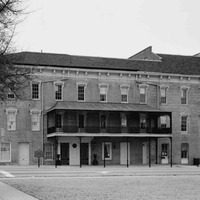
This is a digital exhibit to document and tell the story of the historic Liberty Theatre.
Night and Morning in Columbus: A Book, and a Family in the South
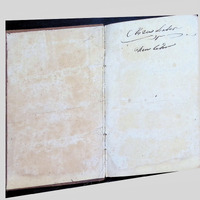
This exhibit argues that this 1841 American edition of Edward Bulwer-Lytton's novel Night and Morning shows how global print culture reached early Columbus, Georgia, and how books like this shaped the identity and values of families such as the Fontaines. By looking at its story, its physical wear, and the faint handwriting inside, we can trace how the Victorian novel became part of a Southern household's intellectual life and survived as a material across generations.
Religious Texts and Documents used for Educating and Informing the Public
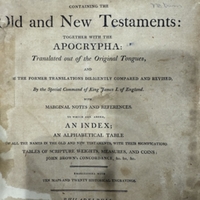
- Holy Bibles from the the 19th Century
- Meant to be used for religious education in homes, churches, and public schools
- Religous newspapers from the 20th century
- uses religion to push a religious narrative
- Both show an effort to bring religious education into homes and schools
Studies in 19th Century Latin: "First Latin Lessons" and the Fontaine Collection
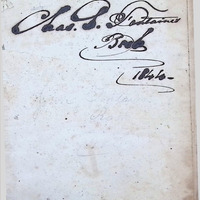
This exhibit analyzes the importance of and the presence of First Latin Lessons by Charles Anthon in the Fontaine Collection. This exhibit serves to explore the role Latin played in 19th century American society as well as how physical grammar books are essential to the proper development and understanding of the Latin language.
The Art of the Manuscript
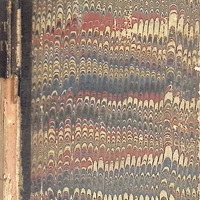
This exhibition examines the religious themes and artistry present in Edward Monro's novel The Vast Army: An Allegory. It will analyze the book's ornate materiality and contextualize its place in the development of art and the written word.
The Life of Dr. Roland B. Daniel

This collection was donated in honor and rememberance of Dr. Roland B. Daniel, who served 28 years as the superintendant of Columbus schools. Before his service to the school systems, Dr. Daniel was very dedicated to his own education having attended Emory University and the University of Georgia. During his carrer, he brough vocational education to the south, primarily in Georgia. After his retirement in 1933, Dr. Daniel continued to help his community through his church and political outreach. Recognition for his life and legacy is long overdue.
